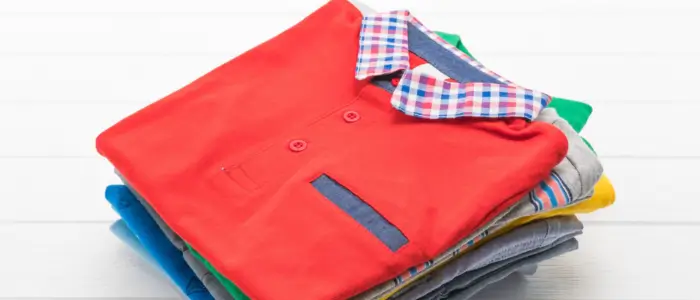
Folding a shirt may seem simple, but knowing how to fold it properly can make a big difference in maintaining its quality and appearance. Whether you’re dealing with dress shirts, t-shirts, or casual wear, how you fold your apparel impacts how it looks and how much space it occupies in your wardrobe.
The importance of folding shirts correctly must be balanced. Neatly folded shirts save space and keep your closet looking well-organized. It is especially beneficial for business shirts, where presentation is key. A well-folded shirt avoids wrinkles, saving you time on ironing and making you look professional.
In this blog, we will be providing beneficial information regarding how to fold a shirt.
Why Proper Shirt Folding Matters?
Keeping your shirts looking good starts with how you fold them. Proper folding reduces wrinkles and keeps the fabric in good shape. This is key for business attire and custom shirts since a neat look makes a good impression.
Folding your shirts correctly also saves space, letting you fit more shirts neatly in your closet or drawer. Plus, well-folded shirts are more accessible to organize and find, making your morning routine quicker and smoother.
3 Basic Shirt Folding Techniques to Fold Shirts Properly
There are various methods to fold shirts, each suited to different needs and preferences. Such as:
- Traditional Folding Method
- Quick Fold Method
- Japanese KonMari Method
1. Traditional Folding Method
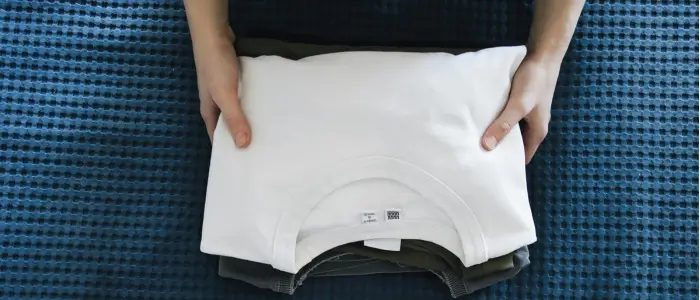
Here’s an easy way to fold shirts:
- Lay the shirt flat with the buttons done up and the front facing down.
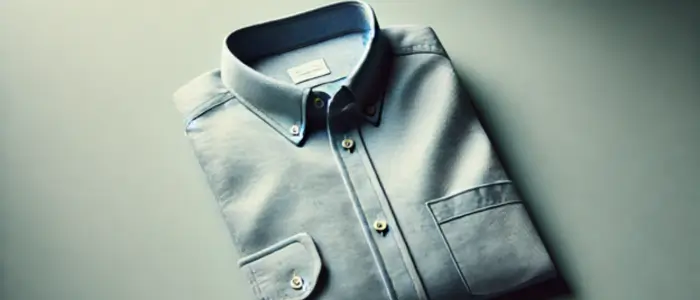
- Fold one side of the shirt towards the middle, bringing the sleeve across the back.
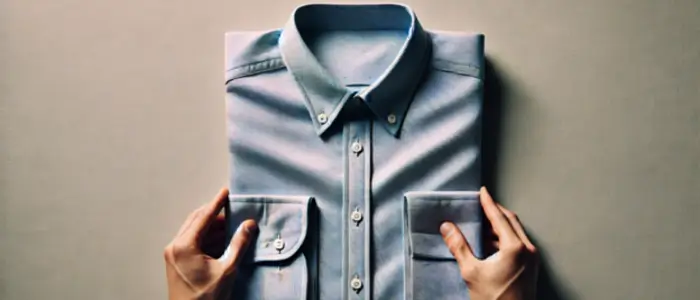
- Do the same with the other side.
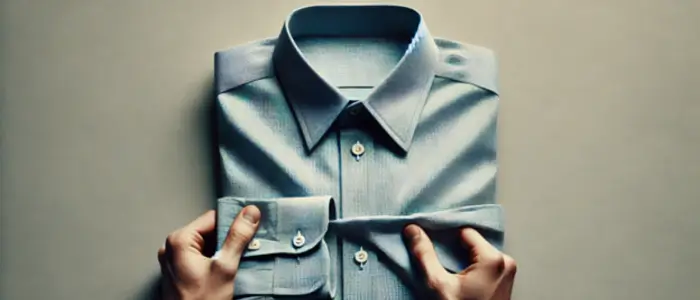
- Fold the bottom of the shirt up towards the collar in one or two folds, depending on its length.
- Smooth out any wrinkles, and you’re finished!
2. Quick Fold Method
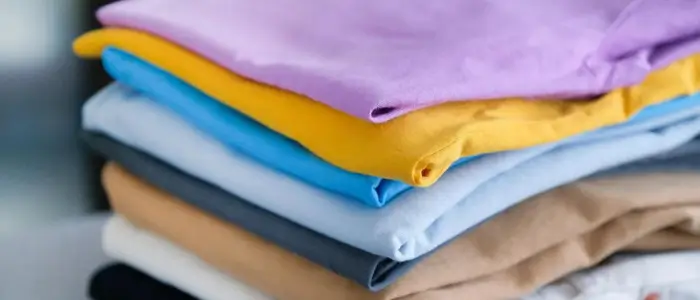
The quick fold method makes folding clothes faster and easier. First, lay the garment flat on a surface. Then, fold the sides towards the centre, ensuring the sleeves are flat. Next, fold the bottom part of the garment up to meet the top. This method simplifies the folding process by eliminating unnecessary steps, making it great for bulk folding when you have a lot of clothes to fold.
You can use the quick fold method when you need to fold a large amount of apparel, like doing family laundry, organising store inventory, or getting ready for a trip. It’s also perfect for anyone short on time but still wants to keep their clothes neat and organised. Whether you’re a busy parent, a retail worker, or someone who likes to be efficient, the quick folding method can help you complete your laundry tasks more quickly and easily.
3. Japanese KonMari Method

The KonMari method, popularized by Marie Kondo, is excellent for compact folding, especially in small storage spaces.
Here’s how to do it:
- Lay the shirt flat, buttoned, and face up.
- Fold one side of the shirt towards the center, then the sleeve back over.
- Repeat on the other side.
- Fold the shirt in half from the bottom.
- Fold into thirds to form a compact, stand-up rectangle.
The KonMari method has many benefits, especially for people with limited storage space. Folding apparel using this method can save a lot of space in your drawers, allowing you to keep more clothes in each drawer without making a mess.
Also, the KonMari folding technique helps keep your clothes organized and easy to find. When you fold shirts into neat rectangles that stand up, you can quickly see and grab any item without making a mess. It saves time, helps you keep your wardrobe in order, and prevents the frustration of searching through piles of apparel.
Overall, the method promotes a neat and efficient way to store your shirt, simplifying your daily routine.
3 Advanced Shirt Folding Techniques (3 Most Appealing Ways of Folding Shirts)
For those who are looking to take their folding skills to the next level, the following are some advanced techniques:
- Folding for Display
- Rolling Method for Travel
- Folding with Tools
1. Folding for Display
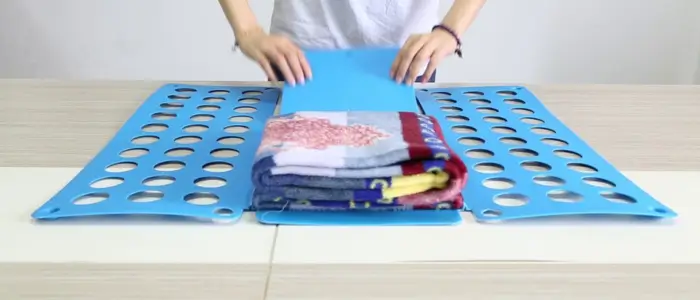
Attention to detail is important when folding shirts to display in a store. Using a folding board or template can help ensure that all the shirts are folded the same way, making the display look neat and professional. It also makes it easier for customers to see the best shirts without having to unfold them.
It’s also important to fold the shirts in a way that showcases their designs or logos. This can catch people’s eyes and make them want to look closer.
Before folding the shirts, make sure they’re smooth and wrinkle-free. This not only makes them look better but also makes them seem of better quality. Using hangers, mannequins, or display forms can also help customers imagine what the shirt will look like when they wear it.
Organizing the shirts by color or style can make the display look even better and help customers find what they want. Putting the best-selling or newest shirts at eye level or in a prominent spot can attract attention and attract people to buy them.
A well-organized shirt display looks good and increases customers’ likelihood of buying. By paying attention to how the shirts are folded and presented, stores can make their displays inviting and increase sales.
2. Rolling Method for Travel

Rolling shirts for travel is a great way to save space in your luggage and keep your shirts looking nice. Here’s how to do it:
- Lay the shirt face down and smooth out any wrinkles. If the sleeves are long, fold them in.
- Fold one side of the shirt towards the center and repeat with the other.
- Roll the shirt tightly from the collar down to the bottom.
Rolling shirts help you fit more clothes in your suitcase and reduce wrinkles because they are packed tightly. This is especially helpful for fabrics that wrinkle easily. When you unpack, the rolled shirts are easy to find and ready to wear without ironing out many wrinkles. So, rolling shirts is a practical way to save space and keep your clothes looking good while you travel.
3. Folding with Tools
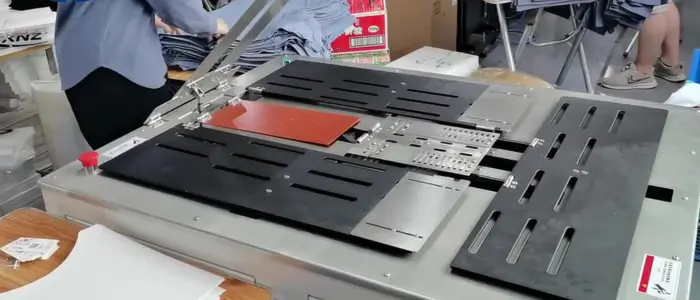
Folding boards and other tools can make the folding process more efficient and uniform.
Here’s a guide using a folding board:
- Place the shirt on the board, face down.
- Fold the sides over the board’s flaps.
- Flip the bottom flap up to fold the shirt’s bottom.
- Lift the board away to reveal a perfectly folded shirt.
These tools are excellent for achieving consistent folds and are ideal for those who prefer precision.
Tips for Maintaining Shirt Quality
Taking care of your shirts involves more than just folding them properly. The following two tips are the best tips to maintain shirt quality:
Fabric Care
Different fabrics need different care when folding. Smoothing cotton shirts out helps avoid creases, keeping them looking neat and fresh. Delicate fabrics, like silk, require gentle folding to prevent damage or wrinkles.
Always check the care labels on your shirts. These labels give you important information on how to handle the fabric properly. Following these instructions ensures your shirts stay in good condition and last longer.
Taking the time to fold your shirts based on their fabric type can make a big difference. It keeps them looking their best and ready to wear, whether it’s for work or a special occasion.
Storing Folded Shirts
Store folded shirts in a cool, dry place to prevent moisture buildup and mildew. It helps maintain their freshness and prevent unpleasant odors. Avoid stacking too many shirts on top of each other. Overstacking can create deep creases that are hard to remove. It also makes finding the shirt you want harder, creating a messy pile.
Properly storing your shirts can keep them looking neat and ready to wear. It also makes your closet or drawer more organized and easier to use.
How to Fold a Shirt – FAQs
What is the best way to fold a dress shirt?
The traditional folding method keeps dress shirts wrinkle-free and crisp while saving drawer space. Start by buttoning the shirt and laying it face down, then fold the sleeves and sides neatly. This method ensures your shirts look freshly pressed every time you wear them.
How can I keep my folded shirts smelling fresh?
To keep your shirts smelling fresh and inviting, use drawer sachets or scented liners. Cedar blocks or lavender bags work great for adding a pleasant scent. Also, remember to air out your drawers regularly to prevent any musty odors. This way, your shirts will always smell clean and pleasant when you wear them.
Is it better to fold or hang shirts?
Hang dress shirts and delicate fabrics to maintain quality; fold t-shirts and casual shirts to save space. Hanging prevents wrinkles and preserves the shape of delicate fabrics. Folding casual shirts maximizes drawer space and keeps your wardrobe organized.
Conclusion
Knowing how to fold a shirt can significantly impact your wardrobe’s organization and the longevity of your shirts. From traditional methods to advanced techniques, each folding style serves a purpose. Proper folding maintains shirt quality, saves space, and presents your shirts in the best possible way. Whether preparing for travel or just organizing your closet, mastering these folding techniques ensures your shirts look their best at all times.
Published on:
June 20, 2024




